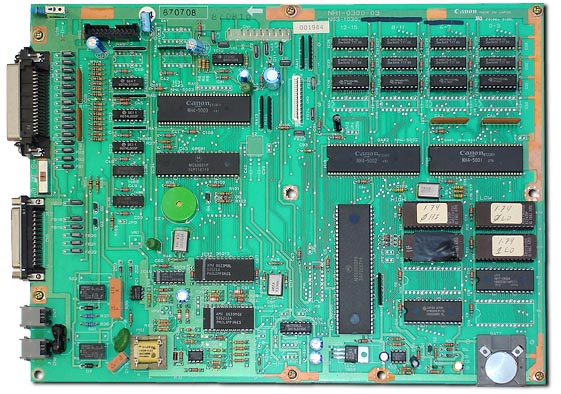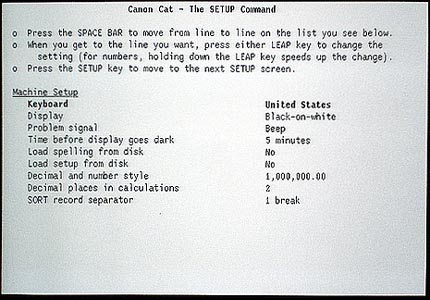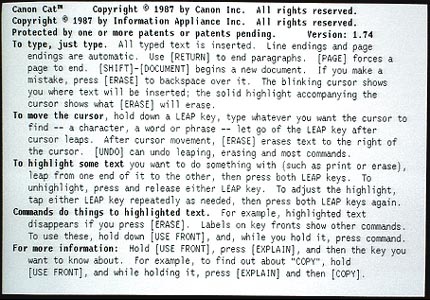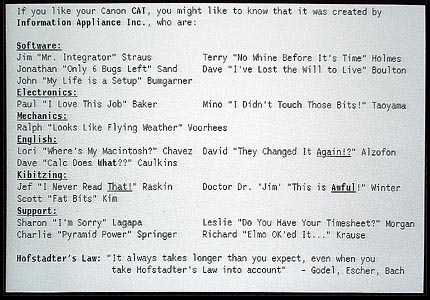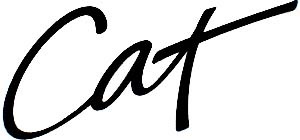
|
|

|
 The Canon Cat was designed by Jef Raskin,
who in 1979 initiated the original Macintosh computer project
while working at Apple (Raskin was Apple employee #31).
The Canon Cat was designed by Jef Raskin,
who in 1979 initiated the original Macintosh computer project
while working at Apple (Raskin was Apple employee #31).

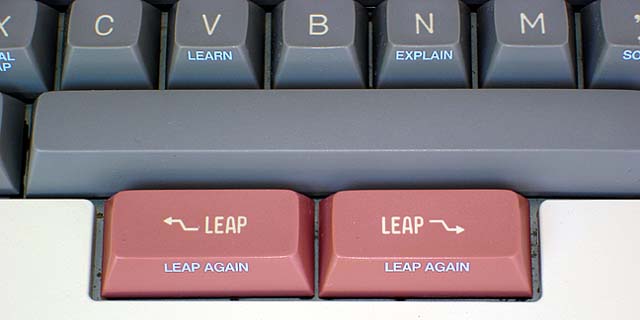
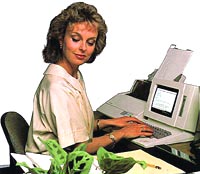
 The Cat is actually much more powerful than let on by Canon, who marketed it as a
closed-architecture secretarial workstation, not as the real computer which exists under the hood.
The Cat is actually much more powerful than let on by Canon, who marketed it as a
closed-architecture secretarial workstation, not as the real computer which exists under the hood.
|
